No products in the cart.
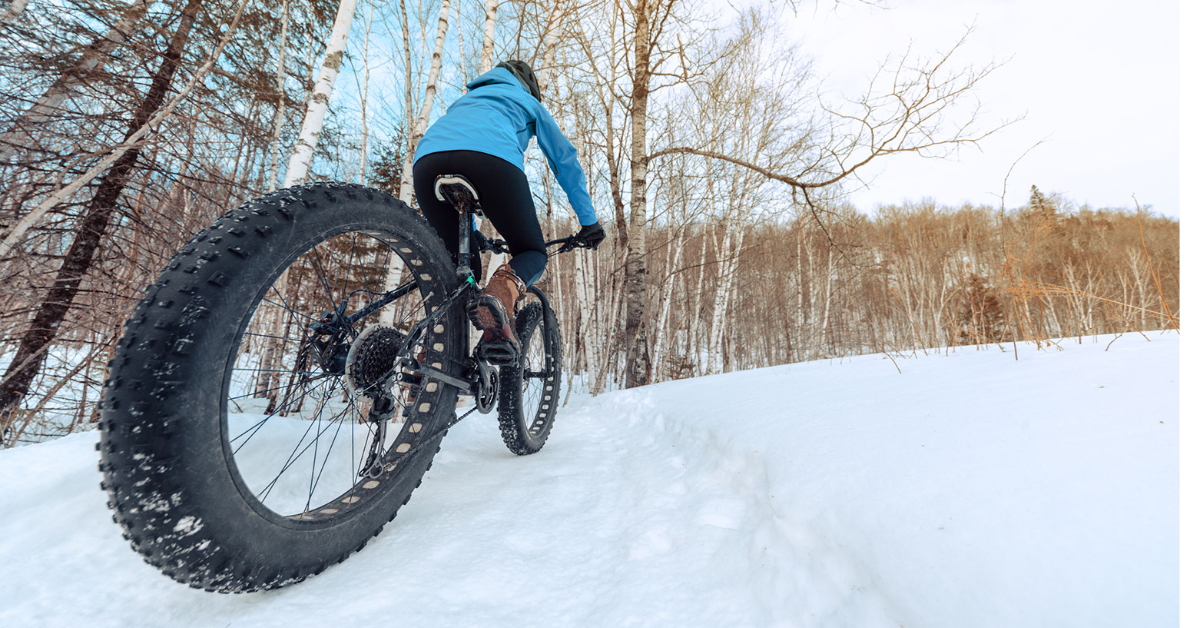
Fat bikes have become increasingly popular among cyclists who seek to expand their off-road capabilities and conquer a wide range of terrains. These bikes, with their oversized tires and robust construction, allow riders to traverse snow, sand, mud, and rocky trails with ease. Whether you’re a seasoned cyclist looking for a new challenge or a beginner venturing into the world of off-road biking, a fat bike can be an excellent addition to your collection. In this Fat Bike Buyer’s Guide, we aim to provide you with all the information you need to choose the perfect fat bike for your adventures. We’ll cover essential factors to consider, such as frame material, tire size, suspension, and budget, while also highlighting some of the most popular fat bikes available in the US market. Additionally, we’ll include helpful resources and links to 4bike.us to assist you in your decision-making process and ensure you find the right bike to suit your needs and preferences. So, let’s dive into the world of fat bikes and discover what makes them an exciting option for off-road enthusiasts.
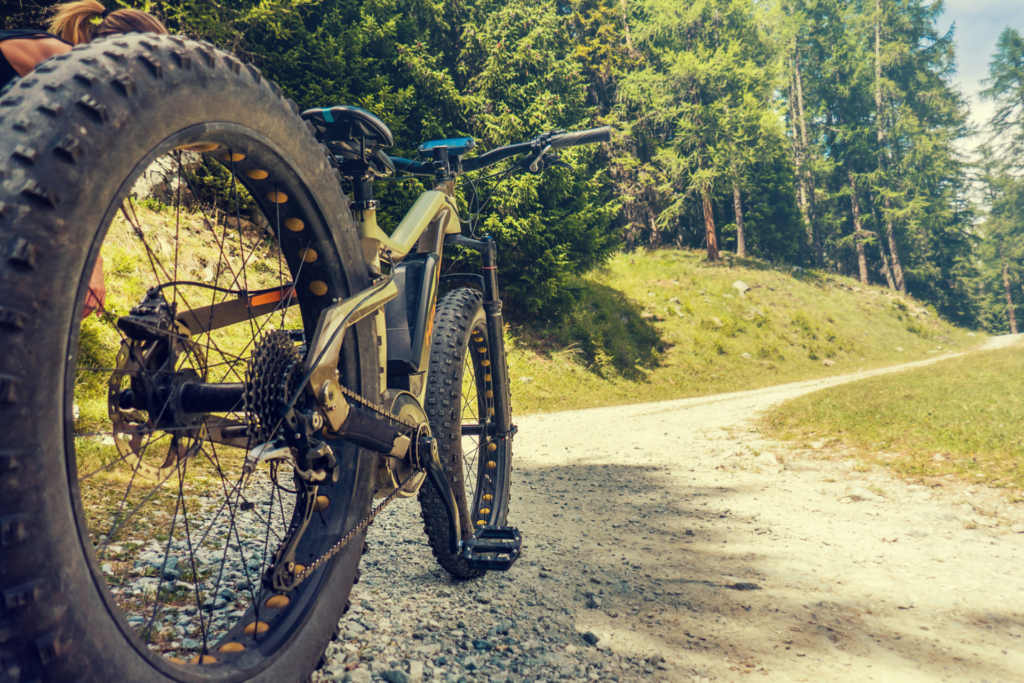
Suspension
The suspension setup on a fat bike plays a crucial role in determining its overall performance, comfort, and handling on various terrains. Fat bikes can be equipped with rigid forks, front suspension forks, or full suspension systems. Each option has its pros and cons, depending on your riding style, preferred terrain, and budget:
- Rigid: A rigid fork is the simplest and lightest option, providing direct feedback from the terrain and requiring minimal maintenance. Rigid forks are ideal for riders who prefer a more connected feel to the ground or those who primarily ride on relatively smooth trails. Bikes like the Specialized Fatboy and Kona Wo feature rigid forks.
- Front suspension: A front suspension fork offers improved comfort, control, and traction on rough terrain by absorbing impacts and maintaining better contact with the ground. Front suspension fat bikes are a popular choice for riders who frequently tackle technical trails or want to soften the ride on bumpy surfaces. Some fat bikes, such as the Salsa Mukluk, can accommodate suspension forks, allowing riders to upgrade from a rigid fork if desired.
- Full suspension: Full suspension fat bikes provide the maximum level of comfort and control, featuring both front and rear suspension systems. These bikes excel on technical trails and can smooth out even the roughest terrain, making them ideal for riders who prioritize comfort and performance on challenging trails. However, full suspension fat bikes are generally more expensive, heavier, and require more maintenance than their hardtail counterparts. The Trek Farley lineup includes full-suspension models for riders seeking this ultimate off-road experience.
When choosing the right suspension setup for your fat bike, consider the types of terrain you plan to ride on and your personal preferences regarding comfort, performance, and maintenance. To learn more about the advantages and disadvantages of each suspension option, read our comprehensive Fat Bike Suspension Guide.
Budget
Fat bikes cater to a wide array of budgets, with prices varying based on factors such as frame material, components, and suspension setup. When choosing a fat bike, it’s essential to determine your budget and select a bike that fits within your financial constraints while still meeting your performance and quality requirements. Here are some tips to help you find the perfect fat bike for your budget:
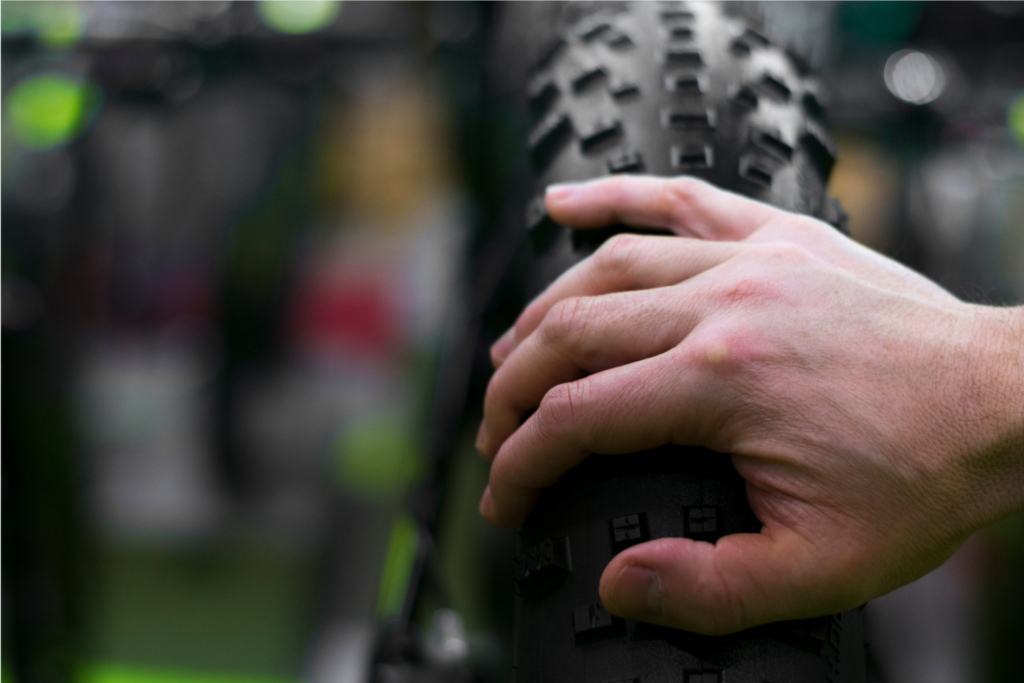
- Entry-level options: For those seeking a more affordable fat bike, consider options like the Kona Wo. While these bikes may not feature the most high-end components, they still provide a reliable and enjoyable ride, making them an excellent choice for beginners or those on a tight budget.
- Mid-range options: Mid-range fat bikes offer a balance between affordability and performance, featuring better components and, in some cases, suspension options. Bikes such as the Surly Pugsley and Salsa Mukluk fall into this category, providing an excellent compromise for riders who want a quality bike without breaking the bank.
- High-end options: High-end fat bikes, like the Trek Farley and Specialized Fatboy, come with top-of-the-line components, advanced frame materials, and suspension options. These bikes are designed for maximum performance and cater to experienced riders or those who have a larger budget to invest in their fat biking adventures.
- Prioritize essential features: When working within a budget, focus on the most critical features for your riding needs, such as frame material, tire size, and suspension. Be prepared to compromise on some components, as you can always upgrade them later as your budget allows.
- Sales and discounts: Keep an eye out for sales, discounts, or clearance events at your local bike shop or online retailers like 4bike.us. These opportunities can help you save on your fat bike purchase or allow you to invest in a higher-quality bike for the same budget.
By determining your budget and exploring options within your price range, you can find a fat bike that suits your needs and preferences without breaking the bank. Remember that investing in a quality bike that meets your requirements will provide a better riding experience and last longer, offering better value in the long run.
Additional Factors
When selecting the perfect fat bike, there are several other factors to consider beyond frame material, suspension, and budget. These additional features can significantly impact your riding experience, so it’s essential to take them into account when making your decision:

Drivetrain: The drivetrain on a fat bike is a crucial component that affects its performance, efficiency, and ease of use. Most fat bikes come equipped with 1x drivetrains, which have become increasingly popular due to their simplicity and effectiveness. Here’s an in-depth look at the benefits of 1x drivetrains and what to consider when selecting a fat bike:
- Simplified shifting: A 1x drivetrain eliminates the need for a front derailleur, making the shifting process easier and reducing the likelihood of chain drops or mechanical issues.
- Reduced weight: 1x drivetrains have fewer components, resulting in a lighter overall bike weight, which can improve handling and acceleration.
- Ample gear ratios: The wide-range cassette on a 1x drivetrain offers a sufficient variety of gear ratios, allowing riders to tackle various terrains and inclines with ease.
- Lower maintenance: With fewer components, 1x drivetrains generally require less maintenance than their multi-chainring counterparts, making them ideal for off-road riding and harsh conditions.
- Gear range considerations: When choosing a fat bike, consider the gear range offered by the drivetrain and ensure it is suitable for your intended riding conditions, such as steep climbs or high-speed descents.
- Chainring size: Different chainring sizes can affect your fat bike’s performance, with larger chainrings providing higher top-end speeds, while smaller chainrings offer better climbing capabilities. Consider your riding preferences when selecting a chainring size.
Brakes: The braking system is a critical component of any bike, and fat bikes are no exception. Hydraulic disc brakes have become the standard for fat bikes due to their performance, reliability, and adaptability to various conditions. Here’s a breakdown of the benefits of hydraulic disc brakes and their importance for fat bike riders:
- Consistent stopping power: Hydraulic disc brakes offer reliable stopping power in various conditions, including wet, muddy, and snowy environments, ensuring that you can safely control your fat bike on any terrain.
- Better modulation: Hydraulic disc brakes provide superior modulation, allowing riders to adjust the braking force more precisely, which results in better control and a smoother, more enjoyable ride.
- Less hand strength required: Hydraulic disc brakes require less hand strength to operate compared to mechanical disc brakes, reducing hand fatigue and ensuring responsive braking even during long rides or challenging descents.
- Low maintenance: Hydraulic disc brakes are generally low maintenance, as they are self-adjusting and do not require cable adjustments or frequent pad changes like mechanical disc brakes.
- Heat dissipation: Hydraulic disc brakes are designed to dissipate heat more effectively than mechanical disc brakes, ensuring consistent braking performance during long descents or heavy braking scenarios.
- Compatibility with wide tires: Fat bikes’ wide tires require a braking system that can accommodate their size, and hydraulic disc brakes are designed to work seamlessly with these larger tires, providing efficient and effective stopping power.
Mounting Options: Mounting options play a vital role in determining the versatility and practicality of a fat bike, especially if you intend to use it for bikepacking, touring, or commuting. Bikes with ample mounting points for racks, fenders, and bottle cages can be customized to suit your specific needs and preferences. Here’s an overview of the importance of mounting options and some popular fat bikes with versatile mounting possibilities:
- Customization: Mounting points on a fat bike allow you to add accessories such as racks, fenders, and bottle cages to suit your specific requirements. This customization can improve your riding experience by providing storage, protection from the elements, and hydration solutions.
- Bikepacking and touring: If you plan to embark on multi-day adventures, having mounting points for racks and bags is crucial. These additions enable you to carry gear, food, and other essentials required for extended trips.
- Commuting: For commuters, mounting options for fenders and racks can be invaluable. Fenders help protect you and your bike from road spray and debris, while racks allow you to carry bags, panniers, or baskets for your belongings.
- Popular bikes with mounting options: The Salsa Mukluk and Surly Pugsley are two popular fat bikes known for their versatile mounting options. These bikes can accommodate various accessories, making them ideal choices for riders seeking a fat bike with added practicality.
In conclusion, mounting options on a fat bike can significantly impact its versatility and suitability for various activities. When selecting a fat bike, consider how you plan to use it and ensure it has the necessary mounting points to accommodate your desired setup.
Wheel and Tire Compatibility: Wheel and tire compatibility is an important consideration for fat bike riders who value versatility and adaptability. Some fat bikes offer compatibility with multiple wheel and tire sizes, allowing you to switch between fat tires and standard mountain bike tires based on your preferences and riding conditions. Here are some key points regarding wheel and tire compatibility in fat bikes:
- Versatility: Fat bikes with the ability to accommodate different wheel and tire sizes offer greater versatility, enabling you to modify your bike setup for various conditions, terrains, or riding styles.
- Seasonal adaptability: Swapping out fat tires for standard mountain bike tires can be particularly useful for seasonal changes. For instance, you might prefer fat tires for winter riding in snow and ice, while opting for standard tires during warmer months or for less demanding trails.
- Improved efficiency: Using standard mountain bike tires on your fat bike can improve rolling efficiency on smoother surfaces or when riding at higher speeds, making your bike more suitable for a wider range of activities, such as commuting or cross-country riding.
- Compatibility considerations: When looking for a fat bike with wheel and tire compatibility, ensure that the bike’s frame and fork can accommodate different tire sizes and that the bike is equipped with suitable hubs and brakes. Some bikes may require specific components or adapters to support multiple wheel and tire configurations.
In summary, wheel and tire compatibility in fat bikes can significantly enhance their versatility and adaptability, allowing you to customize your bike based on your riding conditions and preferences. When choosing a fat bike, consider whether this feature is important to you and look for models that support multiple wheel and tire sizes.
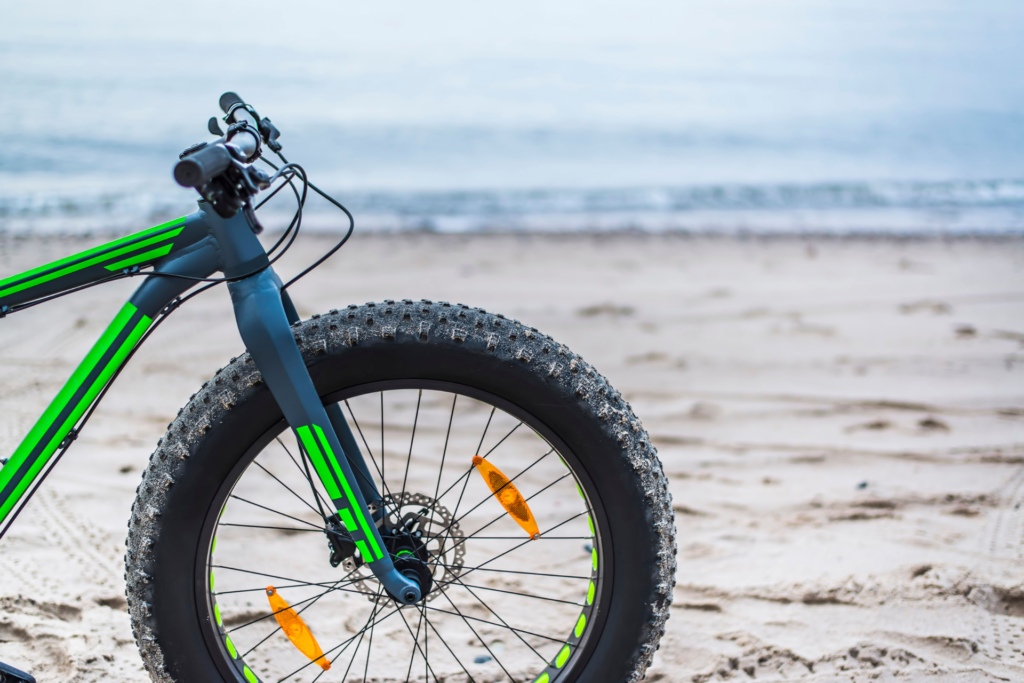
Bike weight: The weight of a fat bike can impact its handling, acceleration, and overall ride experience. While fat bikes are generally heavier than traditional mountain bikes due to their larger tires and robust construction, opting for a lighter bike can improve your performance and enjoyment on the trails.
By considering these additional factors when choosing your fat bike, you can ensure that your bike meets your specific needs and preferences, providing an enjoyable and versatile riding experience across various terrains and conditions.
Bike Weight: The weight of a fat bike is an essential factor that can influence its handling, acceleration, and overall riding experience. Although fat bikes are generally heavier than traditional mountain bikes due to their larger tires and robust construction, selecting a lighter bike can have several advantages. Here are some points to consider regarding bike weight:
- Handling: A lighter fat bike can offer improved handling, making it easier to maneuver and control on trails, especially during technical sections or tight turns.
- Acceleration: Lighter bikes tend to have better acceleration, allowing you to pick up speed more quickly and maintain momentum more efficiently.
- Climbing: A lighter fat bike can make climbing hills and navigating steep terrain more manageable, reducing the amount of effort required and making for a more enjoyable experience.
- Rider fatigue: Heavier bikes can contribute to increased rider fatigue, particularly during long rides or challenging terrains. Opting for a lighter bike can help mitigate this issue and make your rides more enjoyable.
- Material considerations: The frame material plays a significant role in determining the overall weight of a fat bike. Aluminum frames are generally lighter than steel, while carbon fiber frames offer the lightest option but at a higher cost.
- Component selection: The weight of individual components, such as the wheels, tires, and drivetrain, can also impact the overall weight of your fat bike. Opting for lighter components can help reduce the bike’s total weight, but it’s essential to ensure that these components still provide the durability and performance required for fat biking.
Considering the weight of a fat bike is essential when making your choice, as it can significantly impact handling, acceleration, and overall ride experience. While lighter bikes generally offer better performance, it’s crucial to balance weight reduction with durability, reliability, and your specific riding needs
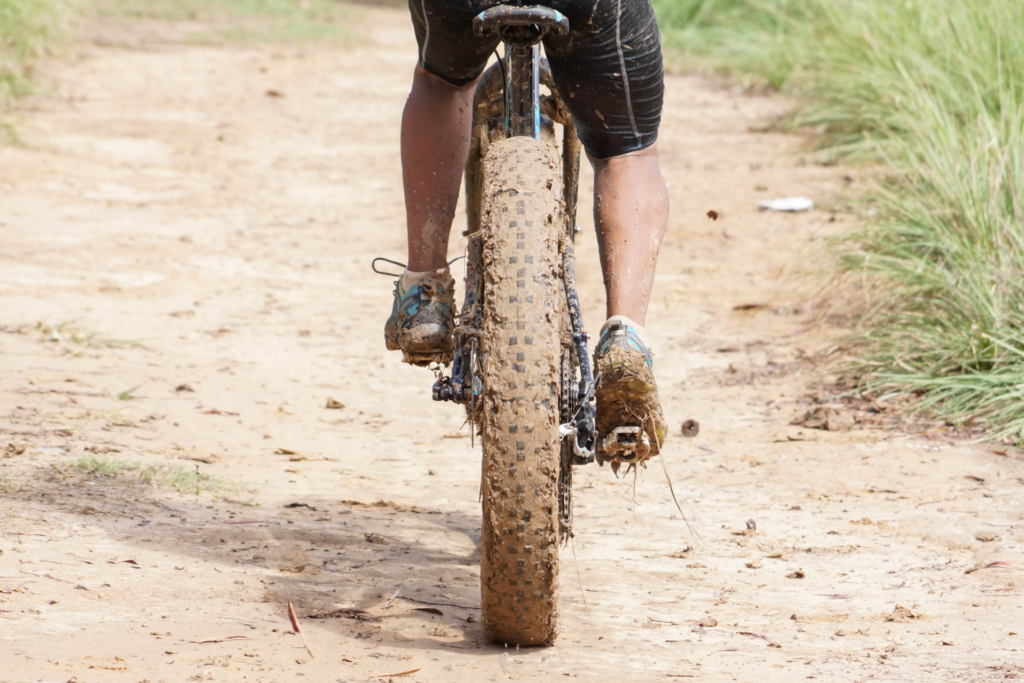
In this Fat Bike Buyer’s Guide, we’ve covered essential factors to consider when choosing a fat bike, such as suspension, budget, drivetrain, brakes, mounting options, wheel and tire compatibility, and bike weight. By taking all these factors into account, you can select a fat bike that meets your specific needs, preferences, and riding conditions.
4BiKE is a leading Cycling Marketplace in the United States and Canada, offering a wide range of fat bikes and cycling accessories to suit every rider’s needs. Visit our website at 4bike.us to explore our extensive collection of fat bikes, components, and gear. We are committed to providing excellent customer service and helping you find the perfect bike for your adventures.
For our customers in the UK, we also have a dedicated site called 4BiKE UK, which caters to the unique needs of the UK cycling community. Visit 4bike.co.uk to explore our range of fat bikes and accessories specifically curated for the UK market.
Remember, the key to finding the perfect fat bike is understanding your riding goals and preferences, and carefully considering the various factors discussed in this guide. Take your time, do your research, and most importantly, enjoy the exciting world of fat biking!



